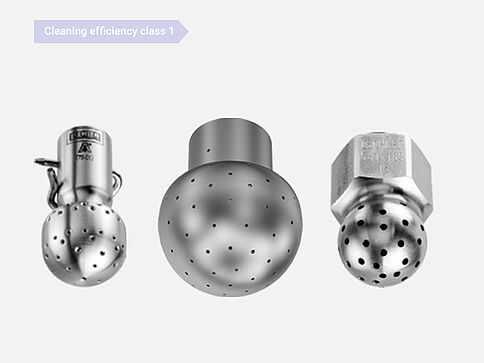Manual vs Automatic Tank Cleaning

Residues, chemicals, bacteria, and particles can accumulate in tanks that can store products, portable water, and other materials used in operational processes. Tank cleaning procedures wash out and sanitize tanks to remove these contaminants. There are various methods to perform tank cleanings that offer different advantages and disadvantages.
Different Industrial Tank Cleaning Methods
Manual tank cleaning, automatic tank cleaning, and robotic tank cleaning are three methods used by industrial facilities. The most common methods are manual and automatic cleanings.
Manual tank cleaning methods involve using staff with pressurized water equipment, pumps, and vacuum hoses. Depending on the size of the tank, the staff may climb inside and manually wash down the walls and vacuum up the contaminated water. For smaller tanks, the staff would maneuver their pressurized cleaning equipment to wash and rinse out the tanks.
Automatic tank cleaning methods involve the use of equipment that is placed into the tank. The equipment may use mounted sprayers, nozzles, pressurized water tanks, and pumps operated using a programmable logic controller (PLC). Instead of using workers, the machines run automatically to send pressurized water and cleaning chemicals to all the interior surfaces of the tank.
Robotic cleanings are advanced technologies that have only recently entered the market. This method is not so widespread throughout the industries due to the possible prohibitive costs and equipment needed, as well as the trained personnel required to perform maintenance on the machines.
Automatic Tank Cleaning Applications
Automatic tank cleaning methods may be used for small tanks and totes used to hold products for shipment. The method can also be used for large industrial tanks that may hold chemicals, oils, portable water, wastewater, or other materials. Industries that may use automatic tank cleaning include food and beverage processing facilities, oil & gas refineries, cosmetic companies, pharmaceutical companies, and many others.
When looking at the oil industry's need for tank cleaning, the automated oil tank cleaning system market is expected to reach $390 USD by 2025. There will be a compound annual growth rate (CAGR) of 3.8% during this same forecasted period.
Manual vs Automatic Tank Cleaning
Manual tank cleanings are the most economical method. It does not require any advanced technologies. The only thing needed to perform the cleaning is the workers, buckets, hoses, pressurized water source, vacuums, and pumps.
However, this method can be time-consuming depending on the size of the tank and dangerous for the workers who may be placed into tanks filled with corrosive chemicals. Manual tank cleaning also is not effective as workers may miss crevices and other areas while using up enormous amounts of water and cleaning products.
Automatic tank cleaning offers a way to clean tanks without needing staff. This method increases the health and safety of workers who don't have to enter tight spots to perform cleanings. Since the process is automated, workers can focus on other tasks as the machines are programmed to operate during a specified time. The spraying equipment and nozzles are able to reach all crevices and nooks in the tank effectively for a more thorough cleaning.
How Automatic Tank Cleaning Reduces Water Waste
Automatic tank cleaning using Lechler spray nozzles and pressurized equipment offers a more evenly distributed water spray that reaches all areas of the tank. In addition, the automatic cleaning method allows for facilities to use a lower water pressure, which may reduce water waste by up to 60%. This method performs the work faster, with less water, while being more efficient.
For more information regarding tank cleaning products, contact Lechler today.